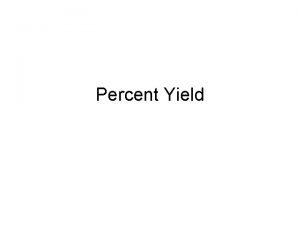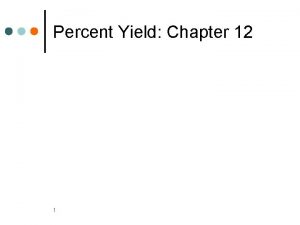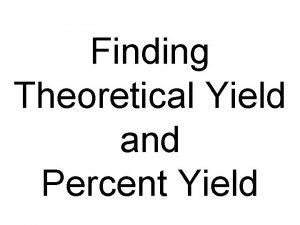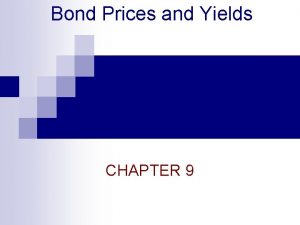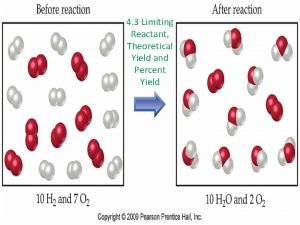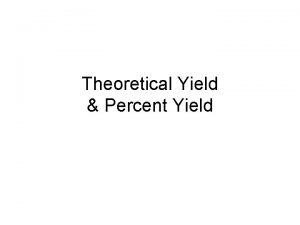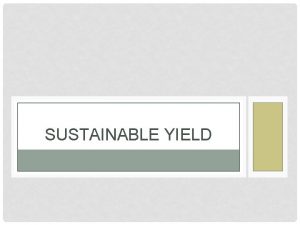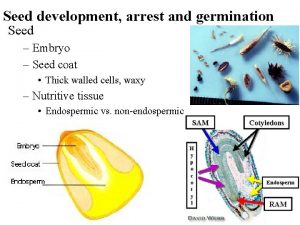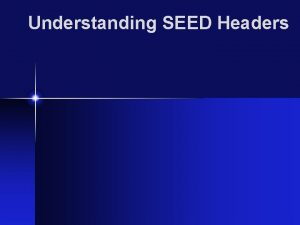Thought Questions Question 1 AOV seed yield main












- Slides: 12

Thought Questions

Question #1 AOV seed yield, main effects of treatment are partitioned using orthogonal contrasts into the following effects: Bonzo Binker Dinker Banker -3 +1 +1 +1 0 0 -1 +1 0 -1 +2 -1 0 +1

Question #2 MSqu from AOV of disease rating. Cx. T was not sig and so pooled into the rep error. Source Reps Cultivars Treatment Cx. T Error df 3 5 4 18 87 MS 21. 5 32. 4 91. 8 2. 1 25. 7 Sig ns ns ** ns

Question #3 Data from the experiment was analyses using the SAS computer package. Although the AOV table showed that genotypes were not significantly different, it was obvious that 76. HG. 81 was higher yielding that the control ‘Sunrise’ as it was more than one LSD more. In this case therefore, it is sufficient to present only a table of cultivar means.

Question #4 A 7 x 7 lattice square with four replicates and 5’ x 20’ plots was conducted at each of four locations in two years. The lattice square design was chosen as it always results in a smaller EMS cw a RCB and hence the se of treatment means is more accurate.

Question #5 One of the largest problems with latin square designs is that the treatments are not truly arranged at random. This can cause great difficulty in cases where the researcher wishes to consider treatments as random effects. Therefore latin squares can only be used when fixed effects are of interest.

Question #6 Genotype A was significantly higher yielding than the control at the 5% level. From this we can say that A will always yield at least 5% more than the control cultivar.

Question #7 After the initial analyses of variance it was obvious the effect of seed treatment should be partitioned using orthogonal contrasts into: (1) treatment A compared to the other treatment and (2) treatments F compared to the lowers yielding treatment C.

Question #8 The R 2 value on the ANOVA was 67% of the total variance therefore all of the data values were within one standard devation from the overall average of the trial.

Question #9 The efficiency of the latin square was determined by comparison to a RCB. The comparison showed rows as being 150% more effective but columns as -45% effective. Therefore you should always use Latin square analyses without column effects.

Question #10 A Tukey’s mustilpe range test is always more effective than using orthogonal contrasts because orthogonal contrasts can often not be orthogonal. In addition orthogonal contrasts limit the number of comparisons that you can make whereas Tukey’s can compare everything.

Happy Holidays
 Percent yield
Percent yield Goedkoopste aov zzp
Goedkoopste aov zzp Aov aoe
Aov aoe Dividend yield and capital gains yield
Dividend yield and capital gains yield How do u find percent yield
How do u find percent yield Actual yield
Actual yield Pure discount bond
Pure discount bond Percentage yield formula
Percentage yield formula Dividend yield and capital gains yield
Dividend yield and capital gains yield Current yield ytm
Current yield ytm Current yield vs yield to maturity
Current yield vs yield to maturity Dividend yield and capital gains yield
Dividend yield and capital gains yield What is the excess reactant
What is the excess reactant




